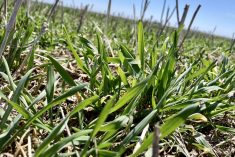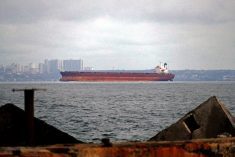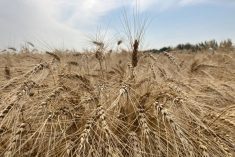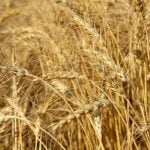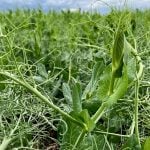Kushuhum, Ukraine | Reuters — A massive locust invasion is threatening sunflower and other crops in Ukraine’s southern regions, largely caused by the war against Russia’s invasion that makes it impossible to use traditional pest control methods, officials and producers say.
Locusts, which can destroy huge areas of crops in a matter of days, traditionally breed in secluded places along rivers or in uncultivated areas, and controlling that is almost impossible in regions neighbouring the frontline.
Read Also

Canada’s Carney to meet China’s Xi in South Korea
Prime Minister Mark Carney will meet with Chinese President Xi Jinping on Friday afternoon in South Korea, the prime minister’s office said on Thursday.
Why it matters: Locusts are destroying crops in Ukraine, a major global exporter of grain and oilseeds.
The situation is complicated by record high temperatures this summer, the inability to use aircraft for locust control and the absence of birds – locusts’ natural predators – which are avoiding the combat zone.
Local and government officials declined to provide data on the extent of the locust infestation or damage caused so far. Ukraine is the world’s largest sunflower oil exporter and before the war ranked fifth among wheat exporters.
Swarms of locusts are covering roads, fields and bushes in Zaporizhzhia region and farmers say the insects have destroyed up to a third of their sunflower crops.
“We saw a big swarm. And the next day the ‘infantry’ marched in. The small ones, they ate everything that was hanging low, they ate everything,” said Oleh Tolmatov, 46, a resident of Kushuhum village in Zaporizhzhia region.
Russia, which invaded Ukraine in 2022, has partially occupied the southern Ukrainian regions of Zaporizhzhia, Mykolaiv and Kherson, forcing farmers to abandon their fields.
Grains and oilseeds are traditional crops for these regions.
“The reason for all of this is high temperatures, the reason for all of this is abandoned land, the reason for all of this is the corresponding Russian aggression,” Vadym Chaikovskyi, Ukraine’s Chief Phytosanitary Inspector, told Reuters.
Denys Marchuk, deputy head of Ukraine’s largest farm producers’ union UAC, said that the destruction of the Kakhovka dam on the Dnipro River by Russian troops two years ago had created huge swampy areas where locusts are breeding.
Kyiv says that Russia blew up the Kakhovka dam in the summer of 2023, draining thousands of square kilometres of the former reservoir and leaving farms and Europe’s largest nuclear power plant without water.
— Reporting by Sergiy Chalyi




